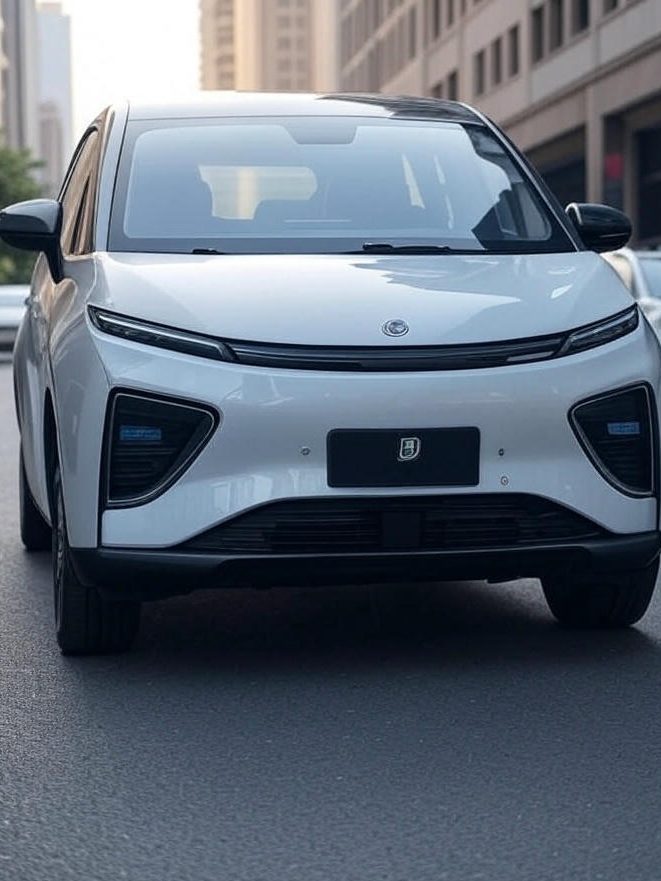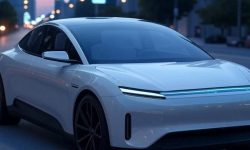
Introduction
The electric vehicle (EV) industry is undergoing a seismic shift, and Chinese manufacturers are at the epicenter. Once considered underdogs in the global automotive market, companies like BYD, Geely, and NIO are now challenging established giants such as Tesla, Volkswagen, and General Motors. With aggressive pricing, innovative technology, and strategic global expansion, Chinese EV makers are reshaping the industry landscape. This blog explores how these new kids on the block are disrupting the global market in 2025, backed by government support, supply chain dominance, and a knack for meeting consumer demands.
The Rise of Chinese EV Makers
A Decade of Strategic Investment
China’s dominance in the EV sector didn’t happen overnight. It began with the “Made in China 2025” initiative, launched in 2015, which prioritized high-tech industries, including EVs. The Chinese government poured over $200 billion in subsidies and tax breaks between 2009 and 2022 to boost EV production and adoption. These policies included consumer rebates of up to $8,000 and free licenses for EVs in congested cities like Beijing and Shanghai, where internal combustion engine (ICE) vehicles face strict restrictions.
From Battery Makers to Global Players
Many Chinese EV manufacturers started as battery producers, giving them a unique edge. BYD, for instance, began as a mobile phone battery maker before entering the EV market in the 2000s. Today, it’s the world’s largest EV manufacturer, surpassing Tesla in 2024 with 3.52 million vehicles sold. Companies like Contemporary Amperex Technology Co. (CATL), the world’s biggest lithium-ion battery producer, supply batteries to both Chinese and Western automakers, reinforcing China’s grip on the supply chain.
Market Share Surge
In 2024, China accounted for 58% of global EV production and 47.9% of domestic automotive sales, with 60% of those being battery electric vehicles (BEVs) and 40% plug-in hybrids (PHEVs). Globally, Chinese brands like BYD, Wuling, and Geely dominated, with BYD alone holding a 35% share of China’s EV market. Posts on X highlight the sentiment: “China’s BYD: The EV Empire That Surpassed Tesla and Took Over the Global Market.”
How Chinese EVs Are Shaking Up the Global Market
Affordable Pricing and Diverse Models
Chinese EVs are winning hearts with their affordability. The BYD Seagull, priced at around $12,000 in China, is billed as the world’s cheapest EV, offering a 500 km range. In Europe, the BYD Dolphin Surf (a hybrid version of the Seagull) launched at $25,000, undercutting many Western competitors. This pricing strategy, combined with a wide range of models—from compact city cars like the Wuling Hongguang Mini EV to luxury SUVs like NIO’s ET7—caters to diverse consumer needs.
Cutting-Edge Technology
Chinese EVs are not just cheap; they’re innovative. BYD’s ultra-fast charging system, unveiled in 2025, can fully charge a vehicle in five to eight minutes. NIO’s semi-solid-state battery, introduced in 2023, offers a 650-mile range, setting a new benchmark. Companies like XPeng and Zeekr integrate advanced software, including autonomous driving and over-the-air updates, appealing to tech-savvy consumers. As one X post noted, “Chinese EV makers are ahead thanks to killer battery supply chains and fast innovation cycles.”
Global Expansion Strategies
Chinese manufacturers are aggressively expanding overseas to counter domestic price wars and Western tariffs. BYD has plants in Brazil and Türkiye, while Geely and Chery are setting up factories in Russia, Spain, and Southeast Asia. By 2026, Chinese OEMs’ overseas manufacturing capacity is expected to double to 4.3 million vehicles annually, with Europe and Southeast Asia as key hubs. Chery, for example, sold 2.6 million vehicles overseas in 2024 and aims for 3 million in 2025.
Challenges Facing Western Automakers
Tariff Barriers and Supply Chain Dependence
Western governments are responding with protectionist measures. The U.S. imposed a 100% tariff on Chinese EVs, while the EU introduced tariffs of up to 38% in 2024. However, these measures haven’t stopped Chinese brands from gaining an 8% share of EU EV sales in 2023, up from less than 1% in 2019. Western automakers, reliant on Chinese batteries and components, face a dilemma: partnering with Chinese firms risks technology transfer, while decoupling is costly. Volkswagen’s $2.7 billion investment in a joint hub with XPeng in Hefei illustrates this entanglement.
Struggling to Match Price and Pace
Western EVs remain pricier. In the U.S., only the Nissan Leaf, at just under $30,000, comes close to competing with Chinese models, but it lacks the range and features of a BYD Seagull. European manufacturers like Renault are racing to develop affordable EVs, but price parity with Chinese models is not expected until 2025–2028. The rapid pace of Chinese innovation—new models launched continuously—leaves Tesla’s offerings looking “staid and stale” to some Asian consumers.
Opportunities and Risks for the Global Market
Opportunities for Consumers
Chinese EVs offer consumers better value, lower maintenance costs, and greener options. As Paul Gong from UBS noted, tariffs limit U.S. consumers’ access to these benefits, potentially slowing EV adoption and climate progress. In emerging markets like Indonesia and Malaysia, where Chinese EVs benefit from tax exemptions, sales have surged, with electric car shares reaching 7% and 4% respectively in 2024.
Risks of Overcapacity and Price Wars
China’s EV industry faces internal challenges. A bruising price war, led by BYD, has squeezed profits across the supply chain, prompting warnings of an “Evergrande-like” crisis. The People’s Daily criticized “disorderly price wars” for risking worker incomes and ecosystem stability. Overcapacity, fueled by $231 billion in subsidies, has led to accusations of market flooding, both domestically and globally.
The Road Ahead for Chinese EV Makers
Sustaining Innovation and Quality
To maintain their edge, Chinese manufacturers must continue investing in R&D. Solid-state batteries, like those being developed by CATL and BYD with $830 million in government funding, promise even longer ranges and faster charging. Quality improvements are also critical, as early perceptions of Chinese cars as “low-quality” have largely been overcome by firms like BYD and NIO.
Navigating Geopolitical Tensions
Geopolitical concerns, including allegations of subsidies and data security risks, will persist. The U.S. and EU argue that China’s industrial policies create unfair competition, while China denies claims of forced technology transfers. Strategic partnerships, like Chery’s tie-up with Jaguar Land Rover, may help mitigate these tensions.
Dominating Emerging Markets
Chinese EVs are poised to dominate emerging markets, where affordability and infrastructure development align with their strengths. In Thailand, the top five EV brands in 2024 were all Chinese, with BYD leading. Latin America and Africa, where sales grew 60% in 2024, are next on the horizon.
Conclusion
Chinese EV makers are no longer the new kids on the block—they’re the ones rewriting the rules. With unbeatable prices, cutting-edge technology, and a global footprint, companies like BYD, Geely, and NIO are challenging the status quo. While Western automakers scramble to catch up and governments erect tariff walls, Chinese manufacturers are accelerating toward a future where they could claim a third of the global market by 2030. For consumers, this means more choices and lower costs, but for the industry, it’s a wake-up call: adapt or risk being left in the dust.










